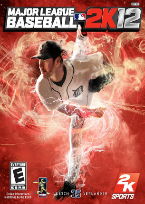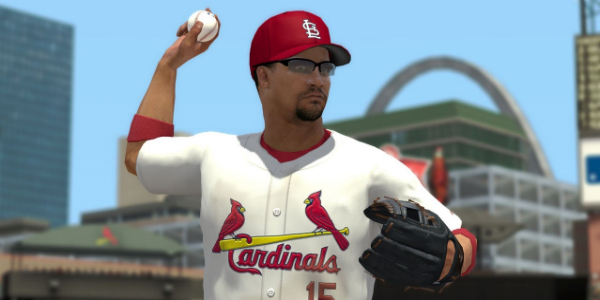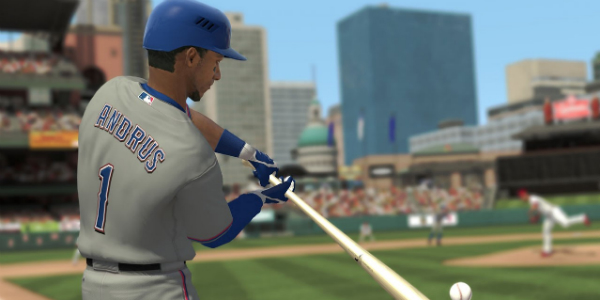In baseball, as in all team sports, there are players who possess a particular skill useful in very specific situations. These players don’t have the ability to fill a team’s everyday needs, being used only when the occasion calls for them. These “specialists” are known as role players.
The same could be said of Visual Concepts’ MLB 2K series. MLB 2K12 does few things well. But those few things are done very well. The general consensus among baseball aficionados (or at least those who play videogames) is that Sony’s MLB: The Show series outclasses the competition. Unfortunately, for gamers who only own consoles not named PlayStation 3, MLB 2K12 is the only option for those in need of a baseball fix. For this reason, the term “role player” becomes increasingly appropriate.
There are areas where MLB 2K12 surpasses Sony’s perennial all-star. But there are also a handful of ways in which MLB 2K12 fails to meet the requirements of an everyday starter.
MLB 2K12 just does not look good. Everyone’s heard the old adage that visuals don’t make the game, but the fact is they still mean quite a bit in a game aiming for realism. Player models are awful – there’s no way around it. Players look nothing like their real-life counterparts. There seems to be a generic, ill-defined body type used for nearly everyone, adjusted only for height. What’s worse is that most players in the game are indistinguishable even when viewing their faces.
Some players are better known by their trademark batting stances. It’s the defining essence of their game and often more identifying than a fingerprint. As with many things in 2K12, though, Visual Concepts swung and missed in its attempt to capture this important detail. That’s not all that’s wrong. The animations in this game, especially batters’ swings, are hideously herky-jerky. Meanwhile, baserunning animations resemble extreme power walking, as runners appear upright, maintaining a stiff back, while quickly pumping their arms and legs.
Minor details are everything in the game of baseball, both to players and fans alike. Within the realm of baseball, when specific things, no matter how seemingly insignificant, are inaccurate, it substantially detracts from the overall experience. For whatever reason, teams whose uniforms contain the color blue will inexplicably showcase a shade notches brighter than is accurate, and I can’t quite put my finger on why it is, but the batting helmets have always looked strange in this series. They look almost like a puffy old leather football helmet. The ear flaps remind me of bagel halves.
MLB 2K12’s physics, at least in the moments where the ball is in play, evoke a sense of playing on ice. Ground balls seem to continue speeding along through the outfield grass, rather than slowing as they should. At times, baserunning controls are bad enough to warrant taking a bat to the controller. Runners will occasionally decide to go wherever the hell they want, disregarding any direction you’ve given them.
If only the rest of the game were as impressive as its phenomenal broadcaster commentary (a signature trait of all 2K Sports games), Visual Concepts would have one stellar game on its hands. Unfortunately, this is one of the few aspects the developer got right.
Steve Phillips, Gary Thorne and John Kruk complement each other well, giving legitimate insight and commentary on the game at hand. But they also speak about teams and players outside the context of the current at-bat, inning, or game. Their conversations sound effortless and natural, rarely repeating the same excerpts of dialog. The commentary sounds as professional as a live broadcast. However, a quick glance at the screen and it’s painfully obvious there’s nothing real about it.
Baseball nuts are crazy about statistics. Whether it’s a batter’s success against left-handed Venezuelan pitchers in day games, or a team’s win-loss record while playing on turf versus real grass, baseball fans want to know. 2K12 doesn’t quite go into that level of detail, but it does a great job of informing the player of a batter’s career stats against a pitcher in all conceivable ball-strike counts. It shows the percentages a batter hits the ball to certain fields in certain counts and even notifies the player when the team in the field is putting on a shift. Also helpful is the “swing overview cam.” It displays an overhead view of the last swing in slow motion to see what went right or wrong.
Additionally, 2K12‘s gesture input for pitching and batting is an enjoyable part of the game. Both are predicated on movement of the right analog stick. Batting is made more accessible to casual fans, as seeing the ball isn’t overly difficult. I didn’t love the gameplay mechanics, but I found myself enjoying them at times.
Baseball is steeped in failure, which makes any success all the more deserving of praise. A guy who gets a hit 30% of the time is lauded as a master. Unfortunately for Visual Concepts, the same is not true of game design. MLB 2K12 is almost the mirror opposite of MLB The Show, in that it excels in the few areas where The Show is only mediocre. However, it falls far short many of the other categories that really matter. For those who own an Xbox 360 but not a PlayStation 3, 2K12 is a fine choice. It’s far from great, but if it’s the only option it’ll do. For this reason, it is the role player of baseball videogames.




















